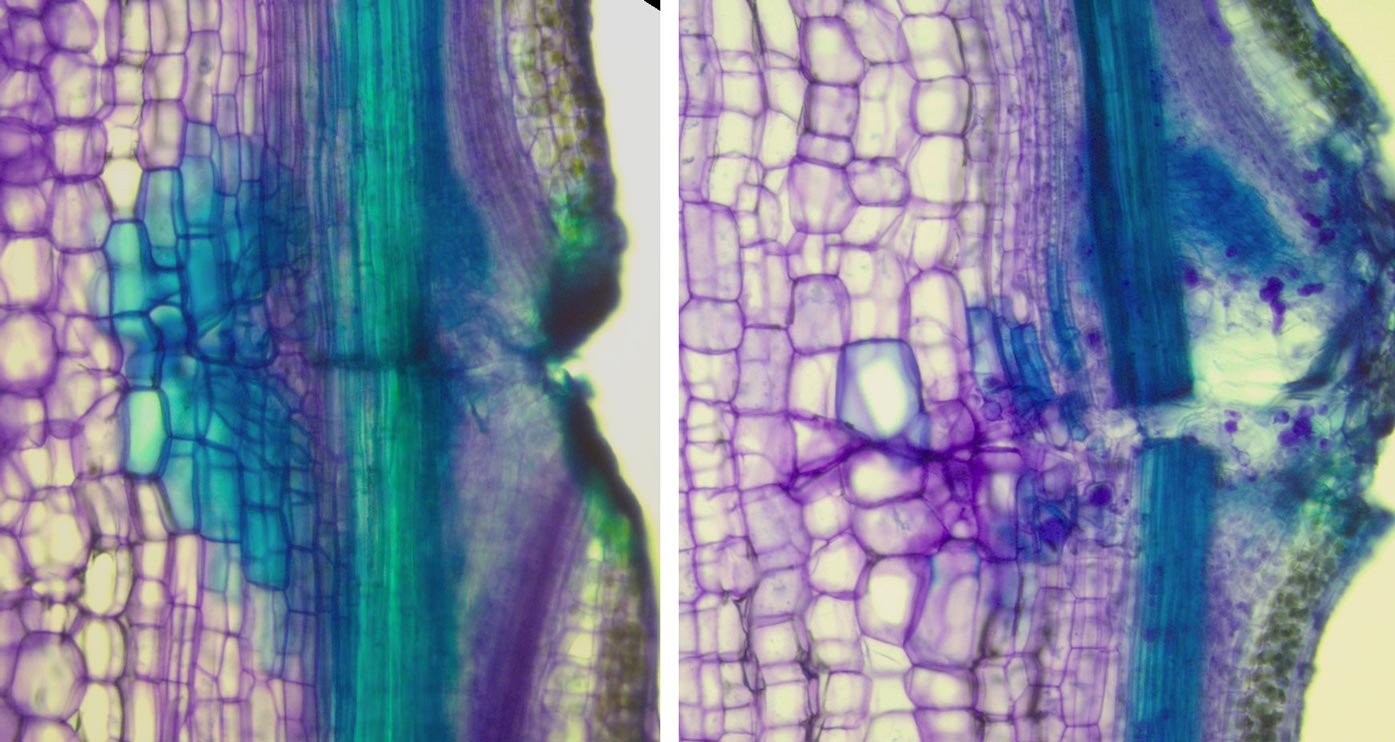October 29, 2020
Molecular compass for cell orientation
Scientists at IST Austria discovered how the hormone auxin coordinates the cells during vasculature formation and regeneration

Plants have veins that transport nutrients throughout their whole body. These veins are organized in a highly ordered manner. The plant hormone auxin travels directionally from cell-to-cell and provides cells with positional information, coordinating them during vein formation and regeneration. Until now, it remained a mystery how cells translate auxin signal into a formation of a complex system of veins. Scientists at the Institute of Science and Technology (IST) Austria discovered a molecular machinery that perceives a local auxin concentration and allows cells to synchronize their behavior to coordinate veins formation and regeneration. The scientists published their study in the journal Science. This phenomenon also applies to wound healing and might lead to more mechanically resistant plants and further agricultural implications.
The human body uses veins and blood to transport nutrients and oxygen throughout the body. Plants use a similar approach, the vascular systems. These veins transport nutrients for survival and define the size, structure, and position of new leaves and allow long-range communication between distant organs. Now, scientists from the group of Prof Jiří Friml at IST Austria, discovered how the plant hormone auxin dictates the newly formed veins’ position. “Auxin decides which cells will differentiate into vascular tissue and orchestrates them to form intricate vein patterns,” explains Jakub Hajný, who led the study. When cells have no ability to sense auxin signal, plant forms disorganized veins with disconnections that limit nutrients distribution. In case of mechanical damage, it also decreases regeneration after wounding.
Cell orientation in a tissue
Already decades ago, scientists suspected that auxin is the vein-inducing signal organizing tissue into the formation of conserved vein patterns. However, scientists could not understand how the cells decrypt this chemical signal into a cellular response so far. The Friml group managed to identify the responsible proteins, called CAMEL and CANAR which serves as auxin sensor. The CAMEL/CANAR complex most likely perceives the auxin concentration in the neighborhood and allows cells to synchronize their orientations to create continuous veins. “It is basically a molecular compass for cell orientation, only instead of a magnetic field, it detects auxin concentration,” explains Jakub Hajný. Thus, the team discovered molecular machinery underlying auxin-mediated vein formation and regeneration.

Publication
Jakub Hajný, et.al. 2020. Receptor kinase module targets PIN-dependent auxin transport during canalization. Science. DOI: https://science.sciencemag.org/cgi/doi/10.1126/science.aba3178%20
Funding information
This project received funding from the European Research Council (ERC) under the European Union’s Horizon 2020 research and innovation program (grant agreement No 742985) and Austrian Science Fund (FWF): I 3630-B25 to Jiří Friml. Jakub Hajný is Recipient of a DOC Fellowship of the Austrian Academy of Sciences at IST Austria



